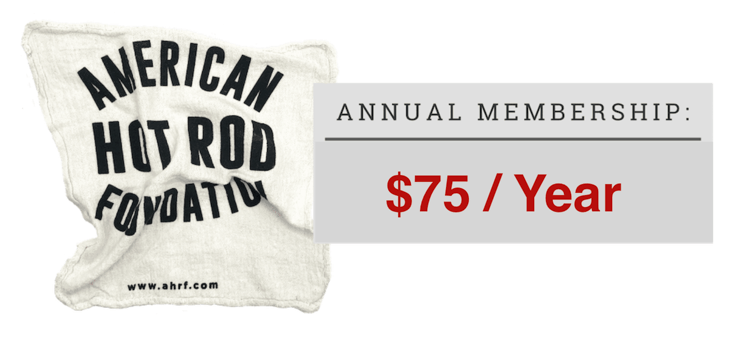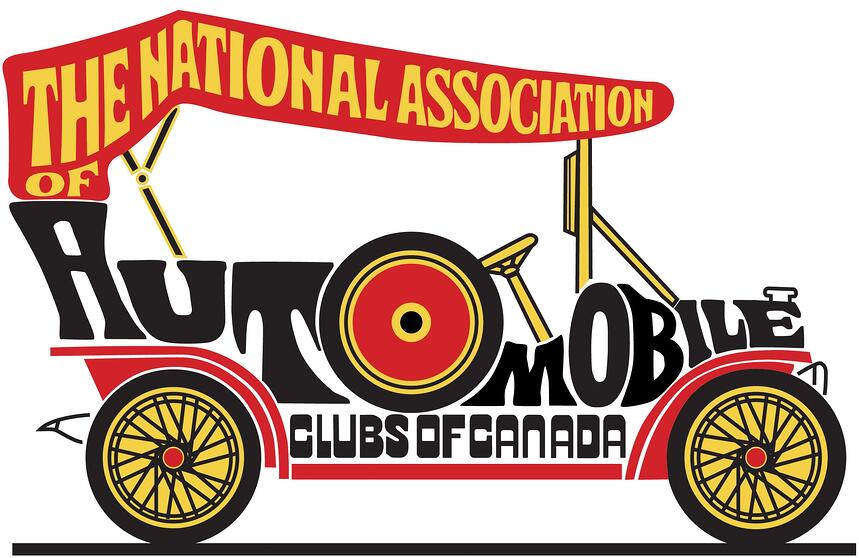Nick Arias is well known for his pioneering work in redesigning engine parts and for the piston company that bears his name. Born in 1929 in Los Angeles, California, Nick’s father was an immigrant from Leon, Spain, and his mother was born in Hermosillo, Mexico.
Nick grew up in the Pico Heights area of Los Angeles, a lower-middle-class neighborhood. He could have joined a gang and have been lost to racing history but for his innate drive to make something of himself. He attended St Thomas Elementary School, and then went on to Los Angeles Polytechnic High School on Washington and Hope Streets. There were good vocational counselors at the high school that directed him into industrial arts and auto shop courses, where he excelled. His shop teachers encouraged Nick and allowed him to work on his own car. The photos of Arias, his friends, and his shop teachers tell the story. You can see how he was going to prosper by the look in his eyes.
He grew up during the Great Depression of the 1930’s, a time that filled a whole decade with despair, only to see the 1940’s bring the Great War, World War II, with the threat of invasion by the Axis powers. Nick went to work at the age of 11 at gas stations around the area. He was earning 50 cents an hour but was able to save up enough money to buy his first car in 1945, a 1932 Three-window coupe, from a veteran who had just come home from the war. Nick soon joined the 100 Mile-an-hour Club out of South Los Angeles in order to run his car at the dry lake land speed trials at El Mirage, under the sanctioning of the Russetta Timing Association ( they raced with the Russetta Timing Association because they allowed coupes to race, rather than the Southern California Timing Association which would only let roadsters run ). Later, with his friends Kenny Bigelow, Joe Pisano, and others from his high school, they formed the Photons car club. They chose the name Photon from a particle of the atom that represented a light beam, the fastest thing in the universe. They did what all young men did back then and today, they found isolated stretches of roads and went street racing. On one occasion he got caught by the police and had to walk all the way home, arriving at 5 in the morning.
The auto shops and organized car clubs kept Nick from getting into rougher street gangs. The hot rodders didn’t have a lot of money in those days to buy speed equipment and that often meant that they had to find parts in junkyards or make their own parts. In 1947, he joined the CRA and was involved in sprint car racing at oval tracks in and around Southern California. His team raced against Jack McGrath, Manny Ayullo, Dick Rathman, and partnered with Walt Mahoney, Ray Douglas and Tony Gonzalez. Nick was the car owner and mechanic. He tried Jalopy racing but found the speeds too slow and the action uneventful. He had better luck in 1947 with Dempsey Wilson as his driver. Dempsey won the first Carrell 500 small-track dirt race and a $3500 purse, the largest such prize at that time for the track roadsters.
Arias graduated High School in 1948, missing out on serving in World War II. He began to make parts, worked as a mechanic, street raced and was active in his car clubs. Then, the Korean War flared up in 1950 and he went into the service joining the 40th California National Guard and saw action at the front in the Kumsan Valley above Seoul, driving trucks and supplies. While he was in the Army National Guard, his friend Kenny Bigelow had died while attempting to break Bob Pierson’s record at the dry lakes. Nick and his close friend, Bob Toros, bought the car from Kenny’s family, and when they got home from Korea, Toros and Arias rebuilt the car and were Russetta Timing Association’s top points champion in that car, in class A and B Coupe. In the process, they moved the record from 136mph to 148mph on alcohol and won the Kenny Bigelow trophy two years in a row.
Nick joined the Screwdrivers Club with Craig Breedlove, Don Rackeman, Lou Baney, Joe Pisano and others. After returning from the war, Nick went to work for Harry Warner at Wayne Manufacturing, where they made push rods. Bob Toros came to work there as well, and the two of them built engines. Toros and Arias first visited the Bonneville Salt Flats in 1953, and a year later they captured the land speed record in their class. In 1954, Bob and Nick bought the rights to the Frank Venolia name and began to build Venolia pistons. Up to that time Frank Venolia had made pistons for Wayne Horning.
In 1955, he went drag racing at Lion’s drag strip in Long Beach, a track made famous by promoter Mickey Thompson and later C.J. Hart. Nick built the engines, Scotty Fenn built the chassis, and Dallas Martinson was the driver. They raced Mickey Thompson and beat him, only to have Thompson complain of a false start. Back in those days, there were flagmen and the racers who knew how to get a quick jump on the flag usually won the race. The electronic Christmas tree would be a few more years into the future. The second race proved no better for Mickey as the Arias team beat him again and that was some feat, as Thompson was also the track manager and not used to being beaten. Don Rackeman and Mike Schmaider also drove for the Arias/Fenn team in those days. Arias would build engines for Joe Pisano, another high school friend, and drag racer.
Nick met his future wife, Carmen Jimenez in 1955, and like many romances, left racing behind for a while as he courted his future wife. There wasn’t enough revenue coming in from Venolia to support a new and growing family and Nick sold his interest to Toros in 1957 and went back to being a mechanic. Carmen and Nick would have five children; Christine who would become a nurse, Michelle who is an auditor, Nick III who owns his own automotive sales company, Carmen, who is running Arias Pistons, and Andrea, a school teacher. Nick and Carmen would have 13 grandchildren and a happy life together. But the urge to create and to own his own company was always there and in 1963 he would buy back into Venolia with his old friend, Bob Toros. This second partnership would last until 1969 when he would sell his share back to Toros for the last time. Arias made some of the best pistons and cylinder heads in the business. He built engines for Juan Fangio and counted Ed Iskenderian and many other automotive innovators as his friends and equals. Perhaps Arias was best known for his preference for Chevrolet engines in their battle with Ford and Chrysler for racing dominance. Chevrolet never returned Nick’s loyalty to their product by sponsorship arrangements, but that didn’t stop “Mr. Chevrolet,” as he was called, from developing the Chevy Hemispherical engine which gave the Chevy owner an equal chance on the race course. He also designed a thermo head piston that could take the abuse of nitro, and the first pin buttons. He had a close relationship with Don Madden at Howard Cams that allowed him to design and develop parts for drag cars that would become a solid part of his business success.
In 1969 he bought Louie Senter’s Ansen Piston business, along with the machines and dies, and renamed it Arias Pistons, and his success has been straight up from there. He moved into a 20,000 square foot manufacturing plant just a short distance away from the Ansen Speed Shop, in Gardena, California. One of his sayings is “give a customer a date of delivery and stick to it.” Another favorite saying is that success in any business “takes money, knowledge, and balls.” Nick said that he is looking for “slow, calculated growth.”
Nick designed and built the Chevy Hemispherical engine which managed to turn out an awesome 890 horsepower rating. “If you didn’t run an Arias motor back in those days,” said Nick, “you couldn’t keep up with us.” Gary Ewing put an Arias Chevy motor in his boat, THE CRUCIFIER and upped the record by 15 mph, setting the stage for more success for Nick. “I got into the boats to make a name for my engines,” said Arias, “and we did quite well.” What went fast on water also went fast on land. His engines also did well in the pro-stock class with Bob Glidden. One of Nick’s last projects was a Bonneville Lakester that he was building with his son and with his friends, Fred Blanchard and Steve Montrelli. He bought the Montrelli engine business in the early 1970’s, sold much of that business to Joe Fontana, and went back into the engine building business with his new Arias Performance Engine.
Nick Arias passed away on January 2nd, 2017
By Richard Parks
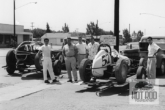
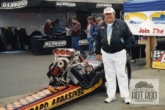
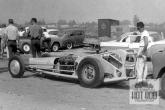
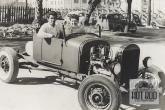
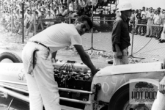
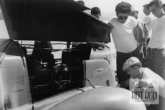
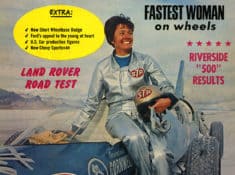 Paula Murphy
Paula Murphy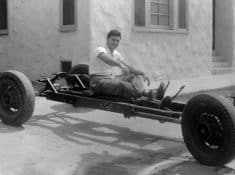 Ed Iskenderian
Ed Iskenderian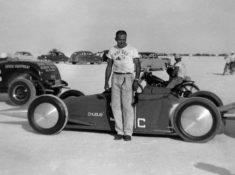 Ak Miller
Ak Miller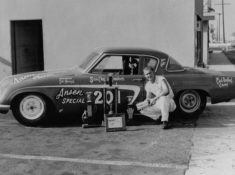 Louis Senter
Louis Senter